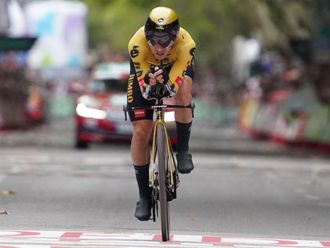Rio de Janeiro: The first time Chloe Dygert stepped aboard the track bike she will be using along with her women’s pursuit teammates, she completely missed what caught everybody else’s attention.
The drive train is on the left side.
Yes, just about every bike you’ve ever seen has the crank on the right, from the high-tech bikes in the Olympic road race to the inexpensive bikes in sporting-goods stores to the itsy-bitsy bikes with training wheels for toddlers just learning to ride.
“Then it hit me,” Dygert said, “like, ‘Oh, yeah! That’s different.’”
USA Cycling, bike manufacturer Felt and several component partners spent more than two years and hundreds of thousands of dollars — if not millions — to build the cutting-edge track bike.
High-performance coach Neal Henderson said it should save more than three seconds off their US squad’s pursuit time. And that is an eternity considering the women posted a world record of 4 minutes, 16.18 seconds at the world championships in March on their old bikes.
Silver medallist Canada and bronze medallist New Zealand were 4 seconds off their pace.
“We zigged when others zagged,” Henderson said with a smile.
The drive train is only part of the equation. The bike also takes into consideration specific aerodynamics of a velodrome for the first time, resulting in an asymmetrical stance to account for yaw, specially shaped tubes and high-end carbon that produces a feather-light ride.
“It’s a leap. I wouldn’t say it’s Fosbury Flop-level,” Henderson said, referring to Dick Fosbury’s revolutionary high jump technique, “but it’s an advance.”
One that could advance the Americans to the top step of the podium.
Their pursuit squad that will begin chasing gold on Thursday won silver at the London Games, albeit with a significantly different line-up. Sarah Hammer is the only rider back and is joined by a bunch of 19- and 20-somethings in Dygert, Kelly Catlin, Jennifer Valente and Ruth Winder.
“I didn’t take it for granted when I was asked to be on this team,” Dygert said.












